Ministry of Culture completes the implementation phase of the Special Campaign 2.0with special focus on record management and files archiving guideline
The implementation phase of the Special Campaign 2.0 has been completed by Ministry of Culture(MoC) which began with a daylong workshop at National Archive of India (NAI) for all officers of MoC with special focus on record management and files archiving guidelines and discussions. During this phase, some of the achievements are:
- About 65% of pending MP references have been disposed.
- 100 % disposal in the IMC References
- About 80% of Public Grievances filed have been completed.
- About 55% disposal of pending PMO references as on date.
- 2 Rules/Processes have been identified and simplified.
- 100% physical files earmarked for review, have been reviewed.
- All 225 Swachhata Campaign sites identified have been cleaned up successfully.
- Revenue of INR 38,52,946/- generated from disposal of scraps.
The Ministry’s office premise at Shastri Bhawan, New Delhi, underwent extensive cleaning activities to have a cleaner work environment and to create optimal usage of the office space. The overall inspection and supervision was done by Secretary ,Culture Shri Govind Mohan and JS (Admin).
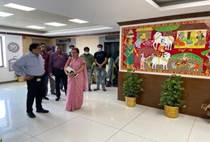

Secretary (Culture) monitoring the Cleanliness Activities at MoC
Various divisions of MoC were duly sensitized to monitor and over see this campaign in the field offices. The ministry received positive responses from its attached offices, subordinate offices and autonomous bodies i.e. Museums, National Libraries, Akademies, Buddhist Institutions etc. Some of the highlights are given below.
The ASI undertook the campaign with utmost seriousness and organized large scale cleanliness drives across the country through its different regional circles ranging from Kashmir to Kanyakumari and Arunachal to Gujarat. Needless to say clean monuments improve the tourists’ footfall.
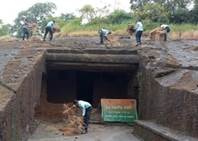
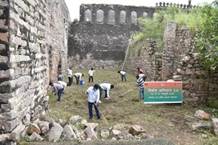
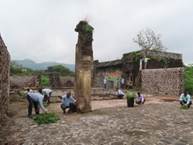
Cleaning Activities at Centrally Protected Monuments by ASI
It took up this campaign to Left Wing Extremism Area(LTEA) e.g Bastar area of Chhattisgarh. The Sub- Regional Centre, Jagdalpur of (ANRC) actively participated in the Special Campaign 2.0 with innovative ideas like transforming the bushes-ridden campus into raising a clean traditional Dorla tribal hut which will further expand the existing open-air anthropological museum with community participation. The staff members first cleaned the campus on 2nd Oct’22. After that, the Dorla tribal community members were contacted for their participation thereby reinforcing the Jan-Bhagidari objective of the Govt. The side walls of the homes are generally made by plastering mud over bamboo wattle or slender twigs. Date palm leaves are used to do the thatching of the house.
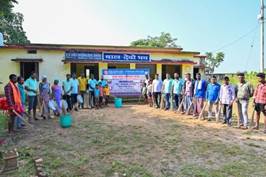
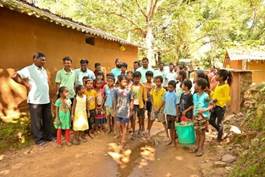
Cleanliness activities with the local community
The community members from Konta of Sukma District also joined the team with bundles of thatching leaves to begin the work. The construction of the Dorla hut was completed on 30th Oct’22.
This Dorla hut will act as a centre for dissemination of information and knowledge on the bio-cultural aspect of the people of the region.
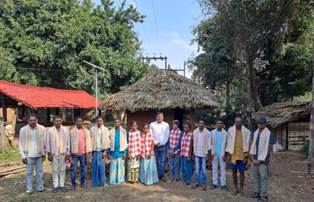
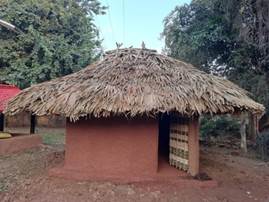
Authentic Dorla Tribal Hut Setup
The AnRC, Port Blair, carried out a series of cleanliness activities in and around the office and museum building from 2nd -19th Oct’22. A special cleanliness drive was carried out by clearing the bushes and garbage behind the office-cum-library building at the entrance gate of Zonal Anthropological Museum (ZAM) on 17th Oct’22.
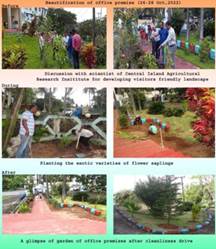
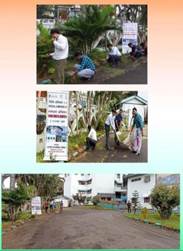
Cleanliness activities and Beautification of the office premises
A special drive was initiated towards utilization of the unused areas in the museum campus. The bushes, non-timber plants and wild grasses occupying the said area have been cleared. In the cleaned up area, traditional dwelling units/huts of the Nicobarese tribe from the Nicobar Islands will be raised. These huts were built using the natural materials available from the tribe’s habitat to maintain indigeneity. This was carried out with the involvement of the tribal leader/ captain of the Tribal Council along with the assistance from the local people. This will also be a learning stint on eco-friendly living, for local people from the tribal culture of that region. Along with that, traditional Jarawa tribal huts and Shompen tribal huts were also set up with the help of the tribal communities in the region. The construction of all these tribal huts was completed by 30th Oct’22.
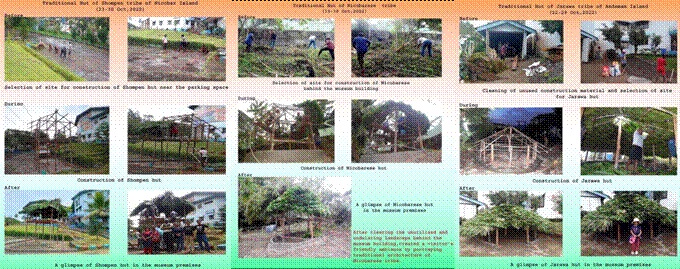
Shompen Tribal Hut Nicobarese Tribal Hut Jarawa Tribal Hut
These tribal traditional huts would now give an exposure to tourists about the types of eco-friendly huts/dwellings being used by Indigenous societies .
AnSI’s Southern Regional Center, located in Bogadi, Mysore cleared and cleaned almost 2.5 acre of unused land in its backward as due to overgrowth of bushes it started inviting wild animals occasionally and 1.5 acre of land has been used for some special purposes including setting up a “Yoga
Track” and developing as a special heritage spot of tribal habitation. The center had invited the people from Betta Kuruba tribal community to construct their traditional hut in such a natural ambience. Additionally, a small village hut is also constructed in another corner of the area which will be used as a cafeteria for the staff members as well as the visitors.

Betta Kuruba Tribal Hut Village Hut cum Cafeteria Yoga Track
In the ANSI’s North East Regional Centre at Shillong, Meghalaya, extensive cleaning and beautification of the office premises was organized with the help of all the staff members in the office. The office garden underwent intensive cleaning along with addition of a new sitting arrangement, flower beds and more in view of the prevailing weather conditions caused by the cyclonic storm “Sitrang”. To bring out the beauty of the local Khasi culture, traditional Monoliths were also set up in the office premises. These Monolith arrangements were of two types - ‘Mawbynna ’or ‘Mawnam ’which consists of three upright stones with a flat table stone in front and ‘Maw-Shongthait’ which are flat table stones, accompanied by vertical stones which serves as seats for weary travelers.
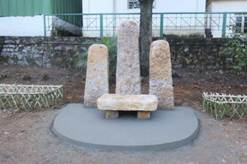
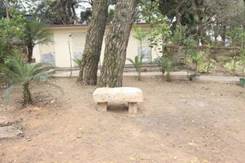
Mawbynna Monolith Maw-Shongthait Monolith
***
NB/SK